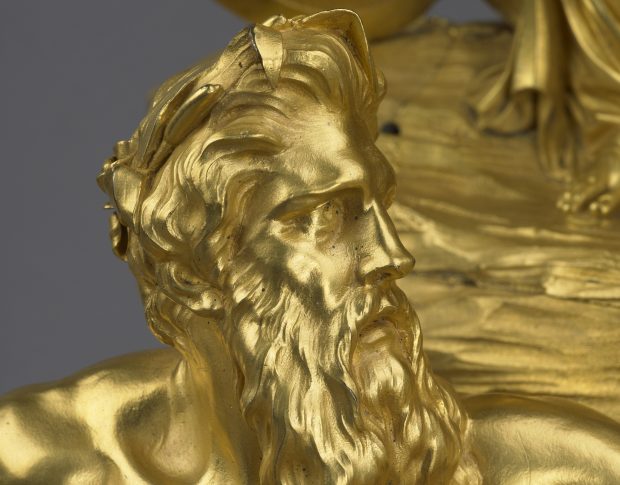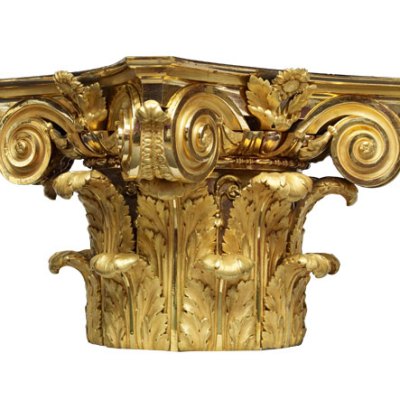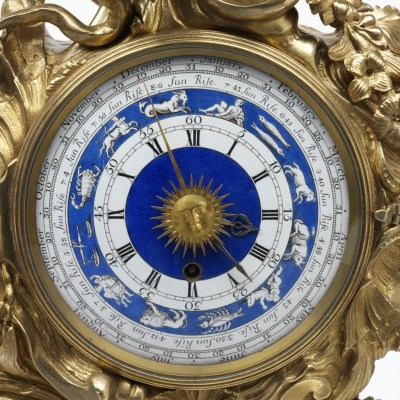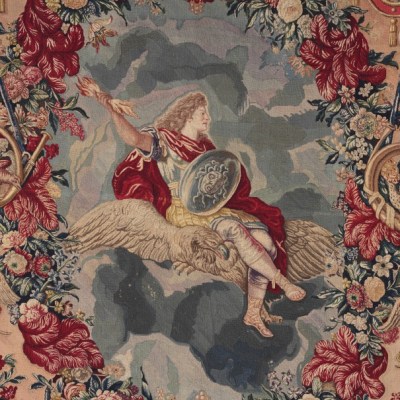The star item of this summer’s ‘Gilded Interiors’ exhibition at London’s Wallace Collection is the spectacular mantel clock shown in its own space at the entrance to this small but beautifully designed installation.
It was commissioned in 1771 by the council of the city of Avignon as a gift for the Marquis de Rochechouart, who had won back that city for France from the papacy. The order was given to Ange Aubert, an Avignon-born jeweller established in Paris and the sculptor Louis-Simon Boizot prepared a terracotta model for approval by the Avignon council. The resulting design combines classical references with secular detail. The presiding tutelary female deity with her mural crown represents the city of Avignon who places a wreath of oak on the Rochechouart coat of arms above the clock dial. Below the dial, male and female river gods represent the Rhone and its tributary the Durance, the rivers which bring prosperity to Avignon.
The Avignon Clock (1771), designed by Louis-Simon Boizot; case made by Pierre Gouthière. Wallace Collection, London
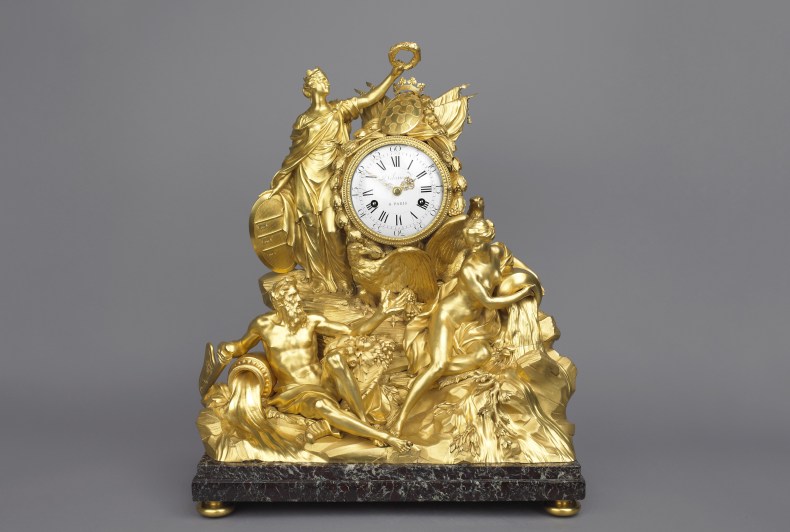
Boizot had recently returned from five years’ study at the French Academy in Rome. The figures modelled for this sophisticated clock case were inspired by his knowledge of classical and baroque sculpture in the Eternal City. They range from the classical Vatican statue of the river god Nile to Bernini’s celebrated Four Rivers fountain, representing the Nile, the Danube, the Ganges, and the Plate in the Piazza Navona.
The model was probably cast under the supervision of Pierre Gouthière, whose astonishing skill as a ciseleur-doreur has achieved renewed celebrity through the exhibition recently at the Frick and now at the Musée des Arts Decoratifs, Paris. The gleaming skin of the river gods contrasts with skilfully chased details; the horn of plenty is filled with pomegranates and vines; flowing water with floating branches of olive cascades from urns over rocks which recall the outcrop on which Avignon Cathedral is built.
The clock dial enamelled by Joseph Coteau is signed Delunésy A PARIS. Its movement, with its early example of a half-deadbeat escapement, was intended ‘to symbolise the beating of the Heart of the City’ and the hands on the dial record time marked by Rochechouart’s good deeds. The commission is well documented; the order was authorised by the city council on 13 April 1771 and the terracotta model was delivered for approval in July. The clock is signed on the back of the shield which bears the coat of arms of the city of Avignon ‘BOIZOT FILS SCULPSIT ET EXECUTÉ PAR GOUTHIERE CIZELEUR ET DOREUR DU ROY A PARIS QUAY PELLETIER A LA BOUCLE D’OR 1771’ (Sculpted by Boizot the younger and made by Gouthière chaser and gilder to the King in Paris, Quay Pelletier at the sign of the golden buckle). The workshop probably specialised in the production of harnesses. The signature, originally reflected in the overmantel mirror, is clearly lettered so as to be deciphered even in mirror-writing. Boizot was the son of one of the designers at the prestigious Gobelins manufactory. He became sculpteur du roy and Director of Sculpture at the Sèvres porcelain manufactory.
Inscription on the back of the Avignon Clock. Photo: Wallace Collection, London
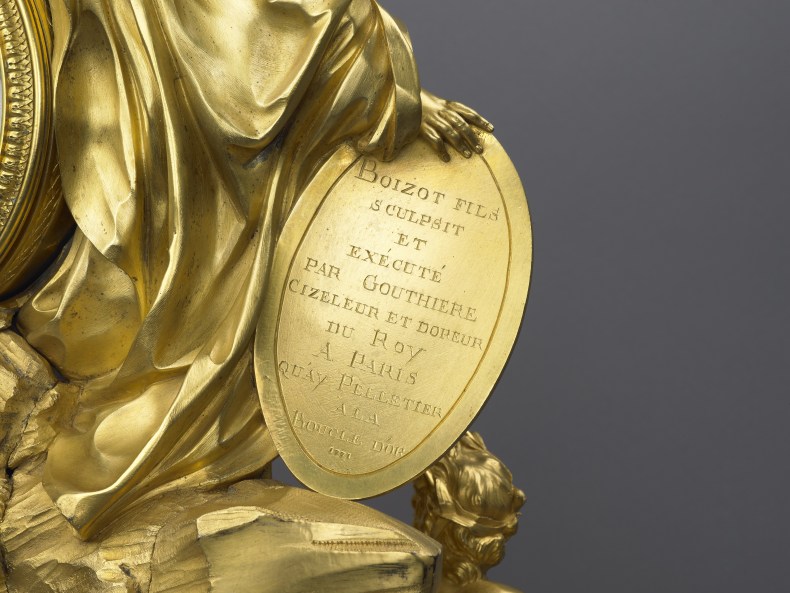
André-Charles Boulle developed the concept of clock cases embellished with figures modelled after famous sculptors including Michelangelo’s Day and Night from the Medici Chapel, San Lorenzo, Florence. Figures of Father Time or The Three Fates were obvious companions for sophisticated time pieces. By 1770, reflecting increased engagement with the classical past, clocks became settings for representations of Greek gods and goddesses, selected to suit individual taste. Such exquisite creations made appropriate diplomatic and personal gifts. Their accompanying small-scale sculpture was easily accommodated in the interior and demonstrated the cultural awareness of its owners. Combinations of porcelain and bronze with sophisticated clock movements attracted entrepreneurial attention from Matthew Boulton in Birmingham to jewellers and merchants in leading European centres.
The Avignon Clock is a feast for the eyes that deliberately captures Roman imagery for French celebration. And the quality of its design and manufacture demonstrates that this exquisitely modelled, cast, and chased confection deserves the same attention as the most accomplished sculpture and jewellery.
‘Gilded Interiors: French Masterpieces of Gilt Bronze’ is at the Wallace Collection, London, from 4 May–30 July.
